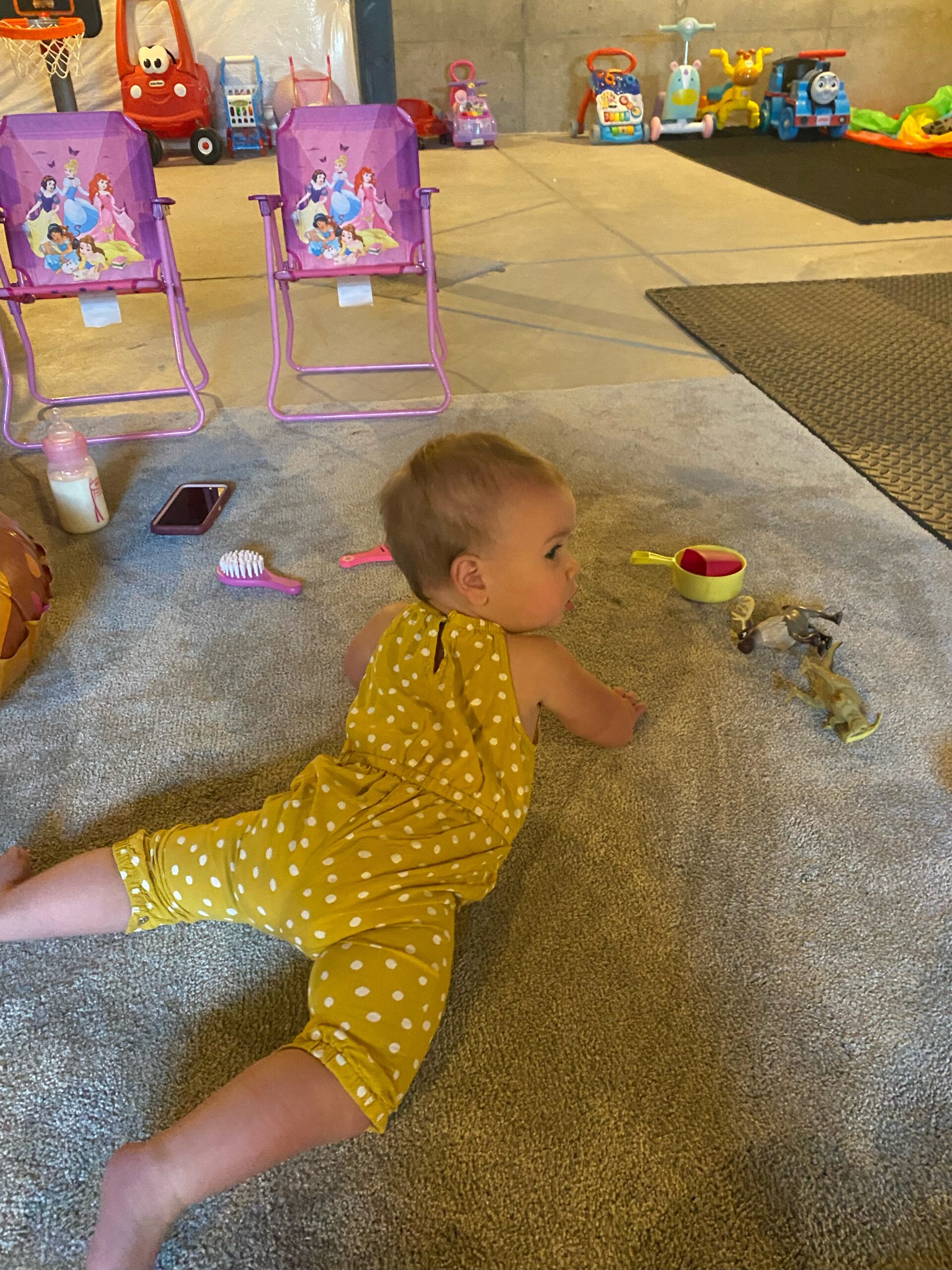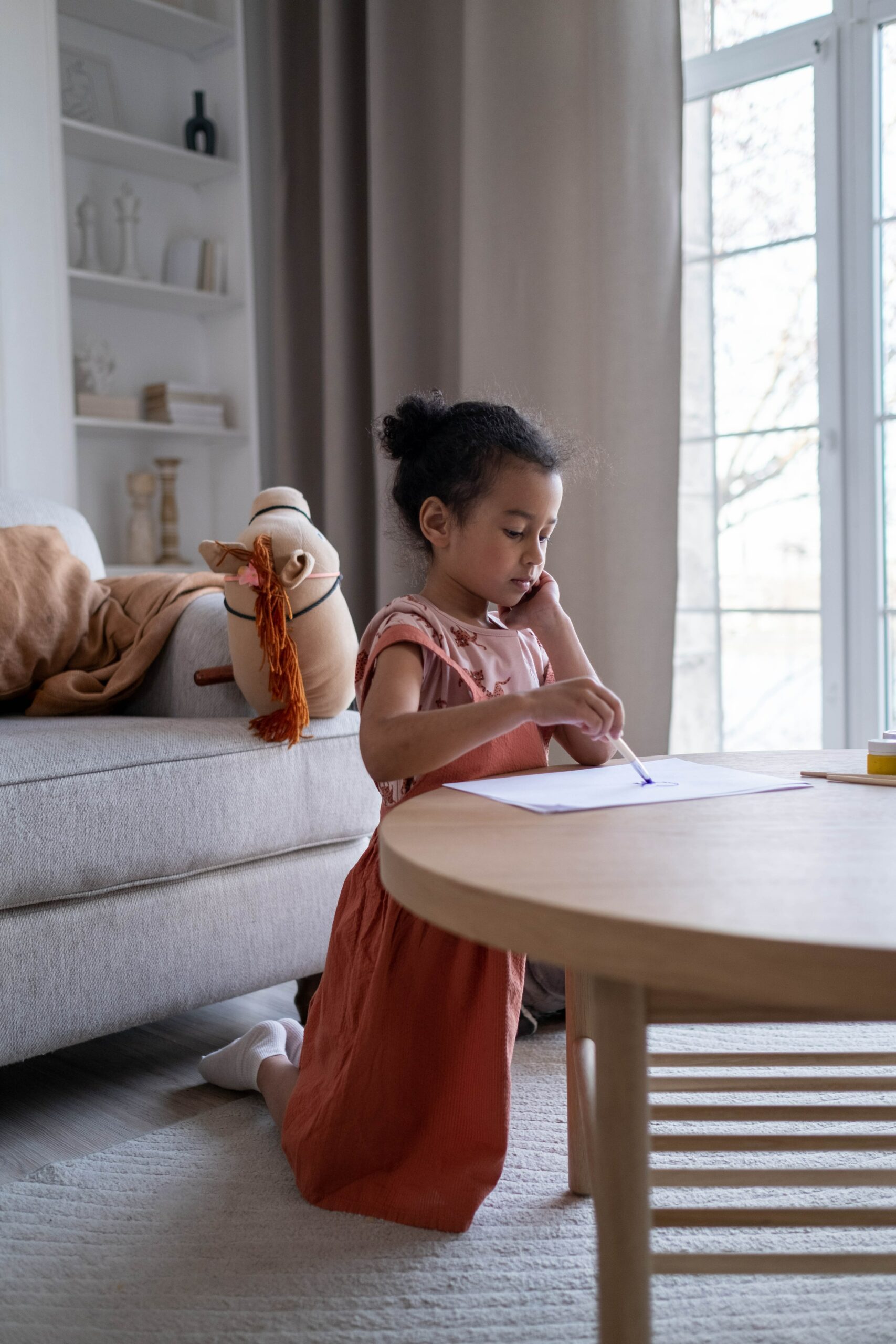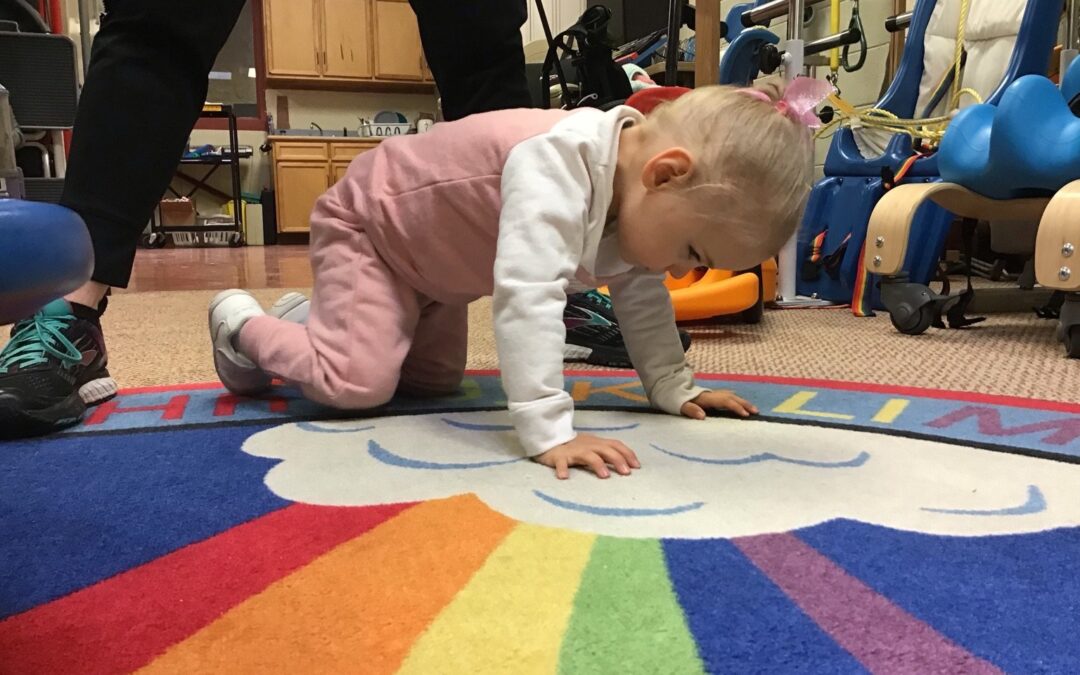By six months old your kiddo has developed some very useful skills: they can now see a few feet away and watch items as they move, they are able to keep their head upright when they are held, and they are spending more time awake, typically napping a couple of times during the day and sleeping for about 11 hours overnight. This progress gives them a greater awareness of the world around them and they start to develop a strong desire to become more a part of it. Because of this, the second half of an infant’s first year of life becomes more about movement. Instead of spending most of their time lying in one position or being held, they are now interested in transitioning their new found strength and coordination into being upright, just like those around them. In order to do this, they need to learn how to move between positions, something we call transitions. This includes moving from tummy to quadruped (hands and knees), lying to sitting, sitting to standing. Let’s dig into these movements a little.

Tummy to Hands and Knees: When on their tummy, kiddos start lifting their head higher up off the ground and pushing up onto straightened arms. As they get better and stronger at this, they will begin to bring their knees underneath themselves and all of a sudden, they are on their hands and knees. Usually, the next step is for them to start rocking forward and back in this position before eventually figuring out how to move one hand and one knee forward in order to begin creeping across the room. Some kiddos need an extra step in the middle of this process when they crawl on their tummy, pulling themselves along with their arms and maybe pushing with their feet to move them forward before they have the strength and balance to move on their hands and knees alone. This may sound easy but the whole process takes months.

Lying to Sitting: Kiddos learn to get into sitting one of two ways. They may push from their tummy onto their hands and knees, shifting their weight sideways slightly pushing one hip toward the ground while they continue to walk their hands backward until they are sitting on their bottom. Other kiddos roll onto their side, bring both hands to the ground in front of them and push themselves up into sitting while folding forward at the waist. Either of these transitions are normal ways to move from lying on the ground into sitting.

Floor to Standing: Moving from sitting to standing is one of the most challenging transitions for infants. It requires body awareness, strength, balance, and coordination. Because of this, how this transition is performed can change over time. Usually this move starts with something we call pull-to-stand. This starts with your kiddo sitting. They then reach overhead to a surface like a coffee table or couch, pull with all of their might, to get onto their knees and from there into a standing position. This may include them rolling over the top of their toes while they straighten their legs. As kiddos begin crawling and spending more time playing in kneeling, with arms on a higher surface and knees on the ground, they often learn to lift one leg into a position called half-kneeling (with one foot and the opposite knee on the ground). To stand from this position they use push-to-stand, where they are pushing more with their legs and pulling less with their arms, using their arms instead to help with balance. They may also start trying to stand up from your lap, pushing up through both feet and not using their arms at all. As kiddos get close to taking their first independent steps, they start attempting to move from a hands and knees position to standing, either using a squat in the middle or half-kneeling without holding onto any furniture.
All of these transitions allow kiddos to explore their environment and learn more about the world around them. It is important that we give kiddos the opportunity to try these new movements and sometimes fail. Our job is to set up safe environments for them to try new things because with every attempt they get stronger and learn more. If your kiddo is struggling to move between positions or if you have any other questions about how to support your kiddo’s growth and development reach out for an evaluation. Our therapists at Kid Physical have over 34 combined years of experience offering specialized, holistic healthcare for children of all ages. Our top priority is providing support for both caregivers and children so that they can reach their highest potential.

